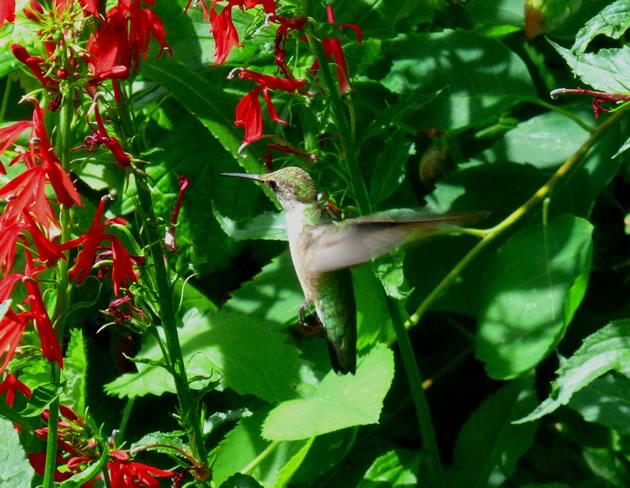Hummingbirds
The migration of ruby-throated hummingbirds to and from the tropics puzzled early birdwatchers.
The migration of ruby-throated hummingbirds to and from the tropics puzzled early birdwatchers. How could such tiny birds manage the long distance flights? A tall tale gained widespread currency – our hummingbirds were hitching rides under the wings of Canada Geese!
An erroneous, but delightful proposition.
But ruby-throats are resourceful birds nonetheless. When they arrive in spring there is a dearth of hummingbird- friendly flowers. At that time of year, hummingbirds will often stalk yellow-bellied sapsuckers, sipping the sap leaking from the holes sapsuckers drill in woodland trees. Small insects drawn to the sap provide the hummers with a protein boost as well.
Cardinal flower connection
Later in the year, there are hummingbird flowers aplenty. One of them is cardinal flower, an achingly lovely denizen of streamsides and wet meadows. Cardinal flowers, in an evolutionary sense, have bent over backwards to make themselves attractive to hummingbirds. Happily, but quite accidentally, the results also appeal to us.
To ensure hummingbird pollination, the cardinal flower’s blossoms are brilliant red, the hummers’ favourite colour. The nectar supply pools at the bottom of a long tube, out of the reach of most pollinators, but perfect for the long beak of a hummingbird.
Most astonishingly though, the cardinal flower has a structure that arches outwards to fit perfectly over a hummingbird’s head as it probes for nectar. First this structure is male and it dusts the hummer’s head with pollen. After five days or so it grows female reproductive parts to receive the pollen from the hummer’s head. Both male and female flowers are usually present at the same time, ensuring pollination.
If you come across the lovely cardinal flower in your summertime rambles, remember that its blossoms have been engineered – albeit unwittingly – by hummingbirds. A story of deep ecological connection almost as enchanting as hummingbirds migrating south, nestled snuggly in goose down.














